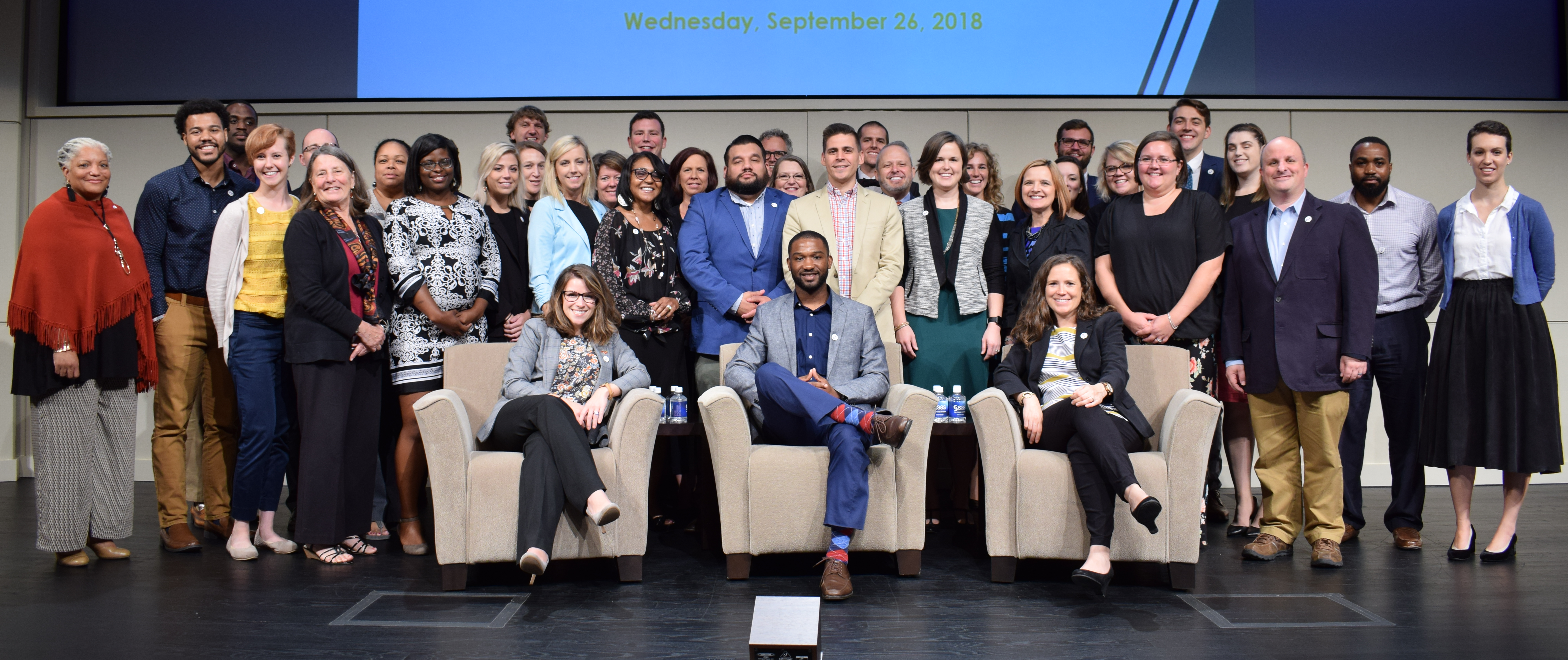First in Teaching (FIT) Roadmap

In 2018, dozens of current and former educators from across North Carolina came together, sharing their stories, experiences, and ideas with the goal of elevating their profession. This group is known as the FIT Leaders. Drawing from their diverse backgrounds and perspectives, they identified the qualities that embody what it means to be treated as a highly-skilled professional. The group also identified critical barriers that are preventing North Carolina from being First in Teaching (FIT). The culmination of their work, thus far, is this NC First in Teaching Roadmap, which highlights practical, actionable innovations to improve the teaching experience and allow educators to better serve their students.
Find a full list of the original FIT Leaders here.
Autonomy
- Access to, and decision-making authority for, classroom and school resources (distributed equitably)
- Accountability that respects individual strengths
- Appropriate mentorship/leadership that doesn’t end when a teacher is considered high performing: everyone can improve and deserves support
- Opportunity to use individual professional skills to meet the unique needs of students
- Time to plan and apply skills
Compensation
- Competitive benefits
- Competitive compensation
- Pay and professional perks that progress as impact and leadership responsibilities grow
Culture
- Environment of cultural, racial, and gender inclusion
- Innovative and collaborative work environment
- Positive environment supported by school leaders who value communication and transparency
- Profession is held to a high ethical standard and possesses processes to maintain integrity
- Shared decision-making
- Shared vision for student success
- Supportive relationships, with reciprocal trust
- Willingness to fail as the team learns and grows
- Work-life balance
Mastery
- Career growth opportunities as teachers evolve professionally
- Challenging, life-long learning opportunities
- Leadership opportunities, if desired
- Meaningful feedback and opportunities for reflection
- Opportunities for continuous improvement
- Opportunities to network with peers outside of the school
- Time to collaborate during the school day
Physical Environment
- Adequate, clean buildings and facilities
- School policies and practices that foster safe environments for educators and students
Professional Team
- Great school leader who empowers all staff
- Sufficient number of other professionals to meet student needs, e.g. counselors & nurses
- Students appropriately matched with teachers’ abilities to maximize student success and wellbeing
- Surrounded by high-quality, committed educators who are as diverse as our students
Purpose
- Feeling of being a part of something bigger, including transparency when policies are made at the federal, state and district level
- Impact: feeling of personally making a difference
- Providing the inspiration to encourage others to want to serve in the field
- Sense of fulfillment
- Workday satisfaction
Respect: The First in Teaching (FIT) Leaders believe that feeling respected is an important aspect of being treated as a professional and that the qualities above are indicators of respect.
The FIT Leaders identified thirteen barriers preventing North Carolina from becoming First in Teaching.
FIT Career Barriers:
- Administrative Burden
- Inadequate Facilities
- Inadequate Teacher Evaluation
- Inflexible Schedule
- Lack of Access to Equitable Resources
- Lack of Career Opportunities
- Lack of Connectedness
- Lack of Recruitment and Preparation
- Lack of Strong School Leadership
- Lack of Time to Plan and Collaborate
- Negative Perceptions
- Outdated Compensation Model
- Teachers Play Too Many Roles
The following priorities and solutions will help overcome the career barriers and elevate the teaching profession beyond what is experienced in any other state. Each of these systemic changes may require school-, district-, and/or state-level shifts in policies, programs, or funding. While the emphasis here is on the teaching profession, the ultimate focus is on why the FIT Leaders teach – to positively impact student success!

